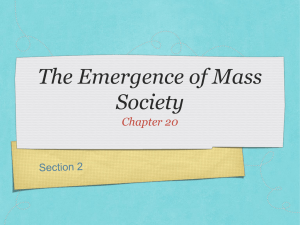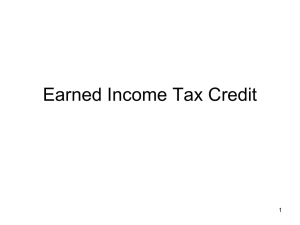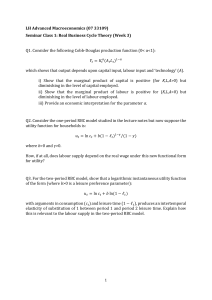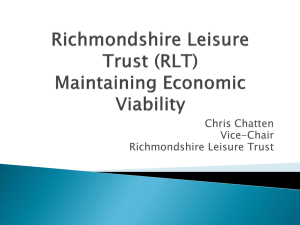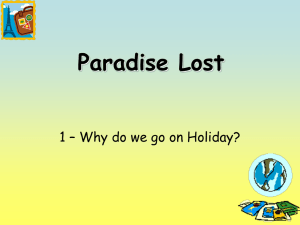Class Room Experiment
advertisement
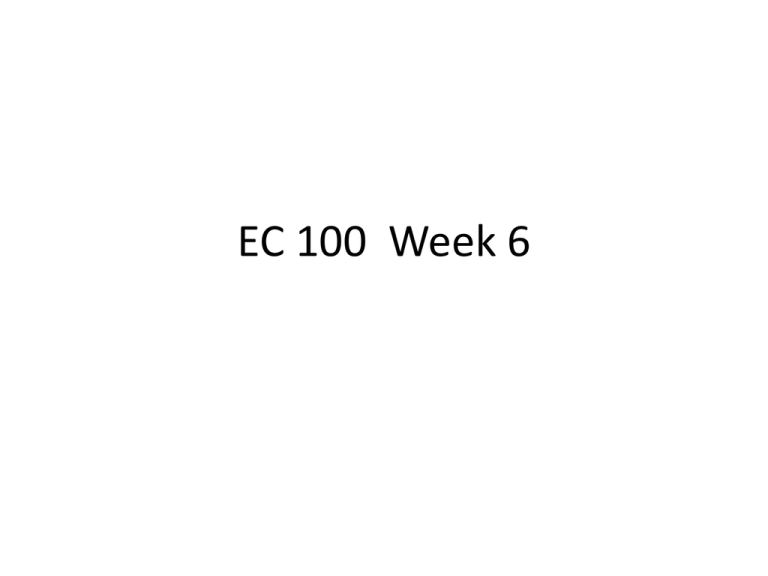
EC 100 Week 6 The Budget Set - Feasible set defined by - Given this income, maximise utility Question 1 • Suppose there are two goods and the price of good 2 rises. If we draw a budget line with good one on the horizontal axis and good 2 on the vertical axis, how will the rise in the price of good 2 change the budget line. • Price of good on vertical axis becomes more expensive --- so if you were to only purchase the good 2, then you could now purchase fewer units. Question 2 Why? Budget set does not change… Bot left hand side (expenses on goods C1 and C2) goes up, but so do incomes. Question 3 • 10 units of Coke makes you as happy as 10 units of Pepsi. • You would thus be willing to give up 1 unit of Coke in exchange for 1 unit Pepsi. • No diminishing MRS Question 4 Income Elasticity Measures the responsiveness of your demand to a change in Income. Imagine the budget set being shifted out – by how much does your demand for Good 1 increase for a 1% increase in income? Question 5 If you consider the example of there being two goods (see graph) – what must happen to the demand for good2 if good 1 is a luxury good? It either increases (but with an income elasticity < 1) or it decreases (in that case it is an inferior good) Question 6 Question 7 Question 8 • Suppose a consumer buys more of a good when his/her income rises. If the price of this good falls (keeping income and other prices constant) which of the following statements are true • First statement: the good is a normal good with positive income elasticity. • Second statement: holding prices and income constant…a lower price should induce consumers to demand more. The question just asks for the Substitution Effect. Question 9 • Increase tax: like a price increase • Sub effect: reduce consumption • Income effect: increase consumption (inferior good) • Net effect (sub + income effects) is ambiguous Question 9 • So… Remember: Every Giffen good is an inferior good. However, not every inferior good is a Giffen good. Question 11 Question 12 • Own Price Elasticity less than 1 means: a 1% increase in the price of the good reduces demand by less than 1%. • So if you increase the price by 1% you cut back quantity by less than 1%, so total expenditure must rise. Question 13 Discussion question • Top tax rate rises from 40% to 50% • What happens to hours worked and tax revenue? Without A Tax Income 150 k Total time available 2000 hrs Hours of work Leisure Tax on Income Above 150k? Income New Budget 150 k Leisure 2000 hrs Hours of work • Below 2000 hours a year: The Work-Leisure choice is unaffected, as she is unaffected by the tax change • Above 2000 hours a year : – Remember: leisure is a good to consume (labour is its alternative) – When wage falls: – Substitution effect: more leisure (unambiguous) – Income effect: income falls, so • Consume less leisure if it is normal • Consume more leisure if it is inferior Somebody earning more than 150k Income 150 k Leisure 2000 hrs Total time available Somebody earning more than 150k Income As drawn, leisure increases (so hours worked falls) 150 k Leisure 2000 hrs Total time available How is the relationship between Tax Rates and Tax Revenues? • There is an “inverse U shaped” relationship between tax rates and tax revenues. • This is called the “Laffer Curve” – Linked to the idea of backward-bending labour supply curve • Can people really substitute out of labour so easily?
